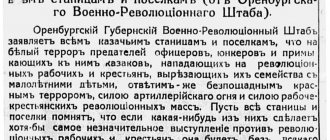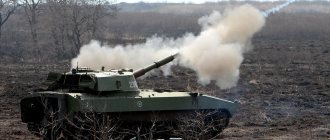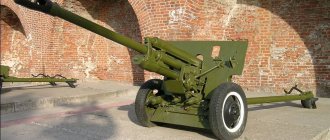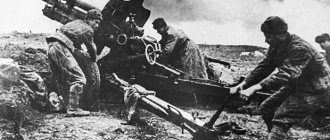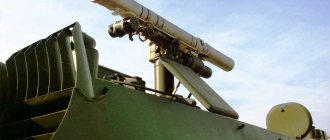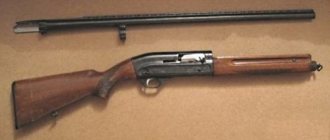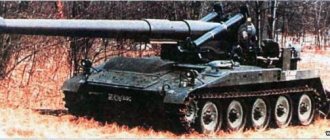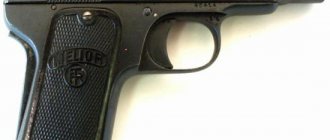Russian Verdun
On the night of November 7–8, 1920, units of the 15th and 52nd rifle divisions and the 153rd brigade of the 51st division began crossing Sivash. And already on November 11, the Soviet radio pathetically announced: “The valiant units of the 51st Moscow Division at 9 o’clock broke through the last Ishun positions of the Whites and firmly entered the open field of Crimea.”
But the most remarkable thing is that back in mid-October 1920, Wrangel, having examined the Perekop fortifications, declared to the heads of the Entente military missions who were with him: “Much has been done, much remains to be done, but Crimea is already impregnable for the enemy.” The same point of view was shared by Lieutenant General Yakov Slashchev (General Khludov from Mikhail Bulgakov’s play “Running.” - Author) and other white generals.
Well, the Crimean newspapers were generally choked with delight, calling Perekop “the second Verdun” and “the Gibraltar of the land.”
Suppose Pyotr Nikolaevich Wrangel was right in asserting that the White fortifications were insurmountable. Why did the Bolsheviks take them so easily? And to this the “Black Baron” had an answer: “The Reds concentrated colossal artillery, which provided powerful support to their units.”
© Photo from the archive The Commander-in-Chief of the Russian Army in Crimea, Pyotr Nikolaevich Wrangel, did not intend to defend Crimea from the Bolsheviks.
In fact, Mikhail Frunze prepared seventy 76-mm field guns and as many as 21 “heavy guns” for the assault on Perekop - 107-mm cannons of the 1910 model, 152-mm howitzers of the 1909 and 1910 models, and 120-mm French guns of the 1878 model of the year. So that historians don’t get dizzy from this “arsenal,” let us explain: under the Tsar-Father, 107-mm cannons and 152-mm howitzers were considered heavy field artillery and were intended to destroy light field (earthen) fortifications. French guns were more likely to be of museum value rather than combat value.
The Southern Front did not have more powerful artillery. And how, with such gun power, was it possible to take the “impregnable fortifications” of the enemy, who had heavy guns with a caliber of 152 to 254 mm? This is fantastic! To be fair, this phenomenon should be carefully studied in all military academies in the world. But the opposite is true: both Soviet and current Russian military theorists are extremely reluctant to remember the storming of Perekop.
Assault on Perekop
SOUTHERN FRONT
In July 1919, the Southern Front was declared the main front by the Bolsheviks.
Fresh units were transferred to him, and party mobilization was carried out. V. Egoriev (a member of the Front's Revolutionary Military Council - I. Stalin) became the front commander, and S. Kamenev was appointed commander-in-chief of the armed forces. The slogan “Proletarian, on horseback!” was put forward, after which Red cavalry corps appeared, and then cavalry armies. This made it possible to nullify the white advantage in cavalry. For some time the Whites still moved forward, but by the end of October a turning point in the course of the campaign appeared. The shock corps of generals Kutepov, Mamontov and Shkuro were defeated, which was the beginning of the end of Denikin’s entire army. The cavalry corps of S. Budyonny, then deployed to the 1st Cavalry Army, struck Voronezh and moved towards Donbass. Denikin's men, cut in two by him, retreated to Odessa and Rostov-on-Don. In January 1920, troops of the Southwestern Front under the command of A. Egorov and the Southern Front under the command of V. Shorin recaptured Ukraine, Donbass, Don and the North Caucasus. Only uncoordinated actions near Novorossiysk by M. Tukhachevsky and S. Budyonny allowed the remnants of the Volunteer Army (about 50 thousand people) to evacuate to Crimea, held by the small formations of General Ya. Slashchev. Denikin handed over overall command of the white forces in the south to General Baron P. Wrangel.
In June-August 1920, Wrangel's troops, leaving the Crimea, occupied Northern Tavria to the Dnieper and western Donbass. Thus, they provided great assistance to the Polish troops. Wrangel proposed leaving the landowner's land to the peasants and cooperation to the Ukrainian and Polish nationalists, but these measures were late and did not meet with trust.
The end of hostilities with Poland allowed the Red Army to concentrate its main forces in the Crimean direction. In September 1920, the Southern Front (M. Frunze) was formed, which outnumbered the enemy. At the end of September - beginning of November, Wrangel made the last attempt to attack the Donbass and Right Bank Ukraine. Fighting began for Kakhovka. V. Blucher's units repulsed all the White attacks and launched a counter-offensive. In Northern Tavria alone, the Reds captured about 20 thousand people. Wrangel was locked up in Crimea. The entrance to it lay through the Perekop Isthmus, where the main line of defense ran along the 8-meter-high Turkish Wall, in front of which there was a deep ditch. Dozens of guns and machine guns guarded all approaches to it. The Lithuanian peninsula of Crimea came close to the mainland, but it could only be reached by crossing the Sivash (Rotten Sea).
On the night of November 8, 1920, several divisions of the Red Army crossed the Sivash ford, thereby diverting the White reserves. At the same time, other forces (Blücher's units and Makhno's detachments) attacked the Turkish Wall. With heavy fighting and thousands of casualties, the White positions at Perekop were broken through, and their attempts to organize resistance were unsuccessful. The Wrangel troops quickly retreated, having managed to evacuate about 150 thousand military and civilians to Turkey on French ships and taking away the remnants of the Black Sea military and merchant fleet. The last commander-in-chief of the White movement left Sevastopol on November 14. On November 15-17, the Red Army entered Sevastopol, Feodosia, Kerch and Yalta. Hundreds of officers who did not have time to evacuate were shot.
The capture of Crimea and the defeat of Wrangel essentially meant the end of the civil war, although in the Far East it continued until 1922.
M. V. FRUNZE. IN MEMORY OF PEREKOP AND CHONGAR
The armies of the Southern Front, having successfully completed their initial task - the defeat of the enemy's living forces north of the isthmuses, by the evening of November 3, stood close to the coast of Sivash, starting from Genichesk and ending with the Khorda area.
Eager, feverish work began to prepare for the crossing of the Chongar and Perekop isthmuses and the capture of Crimea.
Since, due to the rapid advance of our armies and the lack of established new lines of communication, command and control of troops from the location of the front headquarters (Kharkov) was impossible, I, with the field headquarters and members of the RVS Comrade. Vladimirov and Smilga went to the front on November 3. I planned Melitopol as the location of the field headquarters, where we set the task of getting there as soon as possible...
As you know, Crimea is connected to the mainland by 3 points: 1) the Perekop Isthmus, which is about 8 km wide, 2) the Salkovsky and Chongarsky bridges (the first railway), which are strings of bridge structures, partly erected on a dam, up to 8 m wide and long. up to 5 km, and 3) the so-called Arabat Spit, coming from Genichesk and having a length of up to 120 km with a width of 1/2 km to 3 km.
The Perekop and Chongar isthmuses and the southern bank of the Sivash connecting them represented one common network of fortified positions erected in advance, reinforced by natural and artificial obstacles and barriers. Construction began during the period of Denikin’s Volunteer Army, these positions were improved with special attention and care by Wrangel. Both Russians and, according to our intelligence data, French military engineers who used all the experience of the imperialist war in their construction took part in their construction. Concrete gun barriers in several rows, flanking buildings and trenches located in close fire communication - all this in one general system created a fortified zone, seemingly inaccessible to attack by open force...
On the Perekop Isthmus, our units of the 6th Army, even before October 30, building on the success achieved in the battles north of the isthmuses, captured two fortified lines of defense and the city of Perekop in a raid, but were unable to advance further and lingered in front of the third, most heavily fortified line the so-called Turkish Wall (an earthen rampart several fathoms high, built during the time of Turkish rule and closing the isthmus at its narrowest point).
By the way, in the rear of this position, at a distance of 15–20 km to the south, another line of fortifications was erected, known as the Yushun positions.
On Chongar, having captured all the fortifications of the Chongar Peninsula, we stood close to the blown up Salkovsky railway bridge and the burned Chongarsky one.
Thus, when determining the direction of the main attack, it was necessary to choose between Chongar and Perekop. Since Perekop, due to its large width, opened up wider opportunities in terms of deploying troops and generally provided more convenience for maneuvering, then, naturally, our decisive blow was aimed here.
But since, on the other hand, there were very strong enemy fortifications in front of us, and, naturally, his best units were supposed to be concentrated here, the attention of the front command was turned to finding ways to overcome the enemy’s line of resistance with a blow from our left flank.
In these views, I planned a detour along the Arabat spit of the Chongar positions with a crossing to the peninsula at the mouth of the river. Salgir, which is 30 kilometers south of Genichesk.
This lateral maneuver was carried out by Field Marshal Lassi in 1732. The armies of Lassi, having deceived the Crimean Khan, who stood with his main forces at Perekop, moved along the Arabat Spit and, having crossed to the peninsula at the mouth of Salgir, went to the rear of the Khan’s troops and quickly captured the Crimea.
Our preliminary reconnaissance in the direction south of Genichesk showed that here the enemy had only weak security from horse units...
We spent November 7 and 8 at the location of units of the 6th Army. On the 8th at about 4 o'clock. day, taking with us the commander of the 6th Army, Comrade Kork, we arrived at the headquarters of the 51st division, which was entrusted with the task of storming the Perekop Wall head-on. The headquarters was in the village. Chaplinka. The mood at the headquarters and among the division commander, Comrade Blucher, was elated and at the same time somewhat nervous. Everyone recognized the absolute necessity of attempting an assault, and at the same time it was clear that such an attempt would cost considerable casualties. In this regard, the division command felt some hesitation regarding the feasibility of the order for a night assault in the coming night. In the presence of the army commander, I directly, in the most categorical form, ordered the division commander to carry out the assault...
The fire from the enemy is intensifying, individual shells hit the area of the road running along the northern bank of the Sivash, along which we are driving. A strong fire breaks out ahead and slightly to the left of us...
Developing its offensive further into the flank and rear of the enemy’s Perekop positions, the division, after its first successes, encountered stubborn resistance in the Karadzhanai area, who launched one of its best divisions, Drozdovskaya, into a counterattack, reinforced by a detachment of armored vehicles...
A very advantageous circumstance for us, which greatly facilitated the task of crossing Sivash, was a strong drop in the water level in the western part of Sivash. Thanks to the winds blowing from the west, the entire mass of water was driven to the east, and as a result, fords were formed in a number of places, although very muddy and viscous, but still allowing the movement of not only infantry, but also cavalry, and in some places even artillery. On the other hand, this point completely fell out of the calculations of the White command, which considered Sivash impassable and therefore kept relatively insignificant and, moreover, little-fired units, mainly from among the newly formed, in the areas of our crossings.
As a result of the first battles, the entire Kuban brigade of the general was surrendered to us. Fostikov, who had just arrived from Feodosia...
I cannot forget the following fact: when I, at the headquarters of the 4th Army, informed the chief of the 30th Infantry Division, Comrade Gryaznov, and one of the brigade commanders who was with him, that Blucher (he, by the way, was previously Gryaznov’s commander on the Eastern Front) took Perekop, then both turned pale. A few minutes later I saw that Gryaznov and his brigade commander were no longer there, they had rolled off to their position. And a few hours later, the famous night assault by the regiments of the 30th division of the enemy’s Chongar positions began. On the morning of November 11, after a bloody battle, units of the division were already on the other side and, having overthrown the enemy, were rapidly advancing towards Dzhankoy.
This is how the fate of Crimea was decided, and with it the fate of the entire South Russian counter-revolution.
Victory, and a brilliant victory, was won along the entire line. But we got it at a high price. With the blood of 10 thousand of their best sons, the working class and peasantry paid for their final, fatal blow to the counter-revolution. The revolutionary impulse turned out to be stronger than the combined efforts of nature, technology and deadly fire.
“October Revolution”, Kharkov, November 1922
OFFICIAL REPORT OF THE STAFF OF THE COMMANDER-IN-CHIEF OF THE RUSSIAN ARMY. No. 661.
Bid.
October 21/November 3, 1920
Having made peace with Poland and thereby freeing their troops, the Bolsheviks concentrated five armies against us, placing them in three groups near Kakhovka, Nikopol and Polog. By the beginning of the offensive, their total number had reached over one hundred thousand fighters, of which a quarter were cavalry.
Having pinned down our army from the north and northeast, the Red command decided to attack our left flank with its main forces and throw a mass of cavalry from Kakhovka in the direction of Gromovka and Salkovo in order to cut off the Russian army from the isthmuses, pressing it to the Sea of Azov and opening up a free access to Crimea.
Taking into account the current situation, the Russian army made an appropriate regrouping. The main cavalry mass of the enemy, the 1st Cavalry Army with Latvian and other infantry units, numbering more than 10,000 sabers and 10,000 bayonets, fell from the Kakhovsky bridgehead to the east and southeast, sending up to 6,000 cavalry to Salkovo. Having been shielded from the north by part of our forces, we concentrated a strike group and, attacking the Red cavalry that had broken through, pressed it to Sivash. At the same time, the glorious units of General Kutepov completely destroyed two regiments of the Latvian division, captured 216 guns and a lot of machine guns, and the Don captured four regiments and captured 15 guns, many weapons and machine guns. However, the overwhelming superiority of forces, especially cavalry, brought by the enemy to the battlefield in the amount of up to 25,000 horses, which attacked the army from three sides for five days, forced the Commander-in-Chief to decide to withdraw the army to the previously fortified Sivash-Perekop position, which provided all the benefits of defense . The continuous blows delivered by our army in the past battles, accompanied by the destruction of a significant part of Budyonny’s cavalry that broke through to our rear, gave the army the opportunity to retreat to a fortified position almost without losses.
ORDER OF THE RULER OF THE SOUTH OF RUSSIA AND THE COMMANDER-IN-CHIEF OF THE RUSSIAN ARMY
Sevastopol, October 29, 1920.
Russian people. Left alone in the fight against the rapists, the Russian army is waging an unequal battle, defending the last piece of Russian land where law and truth exist. Conscious of the responsibility that lies with me, I am obliged to anticipate all contingencies in advance. By my order, we have already begun evacuating and boarding ships in the ports of Crimea of all those who shared the way of the cross with the army, the families of military personnel, officials of the civil department, with their families, and individuals who might be in danger if the enemy came. The army will cover the landing, remembering that the ships necessary for its evacuation are also in full readiness in the ports, according to the established schedule. To fulfill the duty to the army and the population, everything within the limits of human power has been done. Our further paths are full of uncertainty. We have no other land except Crimea. There is no state treasury either. Frankly, as always, I warn everyone about what awaits them.
May the Lord grant everyone strength and intelligence to overcome and survive the Russian hard times.
General Wrangel.
FROM THE MEMORIES OF P. N. WRANGEL
I headed towards the boat. The crowd waved handkerchiefs and many cried. A young girl came up. She, sobbing, pressed the handkerchief to her lips:
- May God bless you, Your Excellency. God bless you.
- Thank you, why are you staying?
- Yes, I have a sick mother, I can’t leave her.
- May God grant you happiness too.
A group of city government representatives approached; I was surprised to recognize some of the most prominent representatives of the opposition public.
“You said it right, Your Excellency, you can walk with your head held high, in the consciousness of your duty accomplished.” Let me wish you a safe journey.
I shook hands, thanked...
Suddenly, the head of the American mission, Admiral McCauley, who was present there, approached. He shook my hand for a long time.
— I have always been a fan of your work and more than ever I am today.
The outposts sank. At 2 hours 40 minutes my boat left the pier and headed towards the cruiser General Kornilov, on which my flag flew up. “Hurrah” sounded from the loaded ships.
"General Kornilov" weighed anchor.
The ships, one after another, went to sea. Everything that barely floated on the water abandoned the shores of Crimea. There are several unusable ships left in Sevastopol, two old gunboats “Terets” and “Kubanets”, an old transport “Danube”, steam schooners “Altai” and “Volga” blown up by mines in the Sea of Azov and old military ships with damaged mechanisms, even unusable for transporting people. Everything else was used. We anchored at Streletskaya Bay and stayed here until two and a half o'clock in the morning, waiting for the last people to load in Streletskaya Bay and all the ships to go to sea, after which, weighing anchor, we went to Yalta, where we arrived on November 2 at nine o'clock morning.
Around noon, the transports with the troops left. The ships, surrounded by people, passed by, and “Hurray” thundered. Great is the Russian spirit and vast is the Russian soul... At two o'clock in the afternoon we took off and went to Feodosia. We were followed by Admiral Dumesnil on the cruiser Waldeck-Rousseau, accompanied by a destroyer. Soon we met a huge transport “Don”, and “hurray” came from there. Hats flashed. General Fostikov and his Kuban men were on the transport. I ordered the boat to be lowered and went to the Don. In Feodosia, loading was less successful. According to General Fostikov, the tonnage was not enough and the 1st Kuban division of General Deinega, without having time to dive, went to Kerch. General Fostikov's report raised doubts about the diligence he showed. Returning to the cruiser General Kornilov, I sent a radio telegram to General Abramov in Kerch, ordering him to wait and load the Kuban ships at all costs.
At two o'clock in the afternoon, "Waldeck-Rousseau" weighed anchor, firing a 21-shot salute - the last salute to the Russian flag in Russian waters... "General Kornilov" answered.
Soon a radio was received from Captain 1st Rank Mashukov: “The landing is complete, every last soldier has been taken. I’m bringing General Kusonsky to report to the commander-in-chief. I'm going to connect. Nashtaflot." — At 3:40 a.m. “Gaydamak” returned. The landing went well. Troops from barges were reloaded onto the Rossiya. The ships went to sea. (On 126 ships, 145,693 people were transported, not counting the ship’s crews. With the exception of the destroyer Zhivoy, which was lost in a storm, all ships arrived safely in Constantinople).
Night has fallen. The stars shone brightly in the dark sky and the sea sparkled.
The single lights of the native shore dimmed and died. The last one has gone out...
Goodbye Motherland!
Wrangel P.N. Notes
Wrangel "villages"
In fact, the impregnable fortifications of Perekop were ordinary trenches with wire fences, covered in some places with boards. There is also no reason to talk about a large-scale defense, since the Crimean search engines, who explored the peninsula up and down, found traces of only one Wrangel battery with two 10-inch cannons, which stood in shallow earthen trenches. It turns out that Wrangel’s artillery was dug into the ground barely a meter and a half. In other words, we are talking only about field-type fortifications, the construction of which, by the way, began back in 1919 under Denikin.
© Photo from the archive
Only one Wrangel battery with two 10-inch guns stood in shallow earthen trenches.
Colonel Mikhail Levitov, a participant in the battles for Perekop, ridiculed Soviet historians who painted white concrete fortifications: “We didn’t have any of those at all.” Another participant in the battles, Lieutenant Mamonov, recalled: “The trenches at Perekop were good and even had wire barriers, but again our headquarters forgot that they were dealing with living people. There were no dugouts for people, no warehouses, no firewood, no wells.”
And the controlled land mines and minefields installed on the Crimean Isthmus are completely an invention of the Wrangel press, which later migrated to the pages of monographs of venerable Soviet historians.
Grigory Nikolaevich Rakovsky, a journalist at the headquarters of the Don Army, wrote in 1921, already in Constantinople: “For many months, the ruling circles of Crimea introduced the idea in the Russian and foreign press and spread messages about the inaccessibility of Perekop, intensively creating the conviction that for Taking Crimea “you need to go through thirty miles of natural fortifications, intertwined with wire, filled with concrete, filled with mines, improved on the model of the Verdun fortifications by French engineers.” In reality, these glorified fortifications, advertised as impregnable, were beyond criticism. Now it has become clear that months of fortification work, on which huge amounts of money were spent, were carried out with criminal negligence, with the undoubted connivance of the commanding authorities.”
Impregnable Turkish Wall
The main line of defense of the Perekop Isthmus ran along the Turkish Wall, which since the First World War was called “Verdun”. At one time, bloody battles took place there. The French and German armies lost up to 300 thousand killed. The Red Army soldiers understood perfectly well that it would not be possible to easily take the fortified line of defense.
The height of the Turkish Wall was up to 20 m, and the width was about 15 m. In addition, a huge ditch up to 15 m deep was dug in front of it. Wrangel was well prepared to meet the enemy. He protected the first trench line with barbed wire. The second - with artillery and machine gun nests. The Chongar Peninsula, located just east of Perekop, looked even more impregnable. There were concrete fortifications and firing points.
JSC "Wrangel and Co"
However, Baron Wrangel had the opportunity to truly create an impregnable Perekop, surpassing the famous defensive line on the Karelian Isthmus of his friend and drinking buddy in the Horse Guards, Baron Mannerheim. At least he had two full-fledged fortresses at his disposal - Kerch and Sevastopol. It is, of course, impossible to drag concrete forts to Perekop, but it was possible to remove powerful fortress guns with mounting parts, armored towers, armored casemate doors, cellar equipment, rangefinders, searchlights, fortress narrow-gauge roads, etc., etc. In addition, both fortresses had several concrete factories. This equipment could be transported to Perekop in a week.
Finally, Wrangel had a huge fleet. And now we are not talking about active ships, but about five battleships and the cruiser “Memory of Mercury”, which the British disabled in 1919 - they blew up their cars. However, over 80 guns of 152-305 mm caliber remained intact and intact.
© Photo from the archive
Wrangel had his own plans, not related to the defense of Crimea, for the squadron battleship of the Black Sea Fleet "Rostislav".
There were two ways to use cannons taken from ships to defend Perekop. The first is to dismantle these guns and send them to the Crimean isthmuses. By the way, this is what the Bolsheviks did in 1921, removing guns from inactive ships, which were then used to arm all Black Sea coastal batteries from Odessa to Batum. The second method is to completely unload the battleships (removing cars, pipes, steering devices, etc.), reducing the draft, and take them to the edges of the isthmuses: from the west - to the coast of the Karkinitsky Gulf, from the east - to the Arabat Spit. And then the fire of 80 naval guns would not have allowed the Reds to approach Perekop even 15 kilometers away.
At that time, this was not know-how at all. In the winter of 1919-1920, the gunboat Terets supported the right flank of the Whites on the Arabat Spit with fire - despite the heavy draft (about 3.7 meters), the tug brought the Terets 50 meters to the spit. Well, finally, the battleship Rostislav, which was specially grounded in the Kerch Strait so that it could cover the evacuation of the White Army from Crimea with artillery fire.
With the same success, “Rostislav” could have been placed at the Arabat Spit, but Wrangel was not going to defend the Crimea. He had his own ideas for battleships - by that time, a group of entrepreneurs led by Leonid Vitalievich Shabako had founded the Slavic Lloyd joint-stock company, which specialized in the sale of old ships. Moreover, Wrangel and his Prime Minister Krivoshein received a controlling stake in this joint-stock company. It was assumed that four battleships and a cruiser would be put up for sale, which were to be dismantled for scrap in Bulgaria and Serbia. But 80 heavy guns and thousands of shells were valued much more than the hulls.
© Artist Dmitry Moor
Poster “Wrangel is still alive, finish him off without mercy!” - a masterpiece of communist propaganda.
It is possible that the fortifications of the Crimean isthmus, dressed in armor and concrete, supported by the fire of fortress and naval guns, could hold back the advance of the Reds for more than one year. But it is unlikely that the economy of Crimea would have withstood another hungry winter: the peninsula was not able to feed one hundred thousand military and Wrangel officials and three hundred thousand “formers” who had fled from all corners of Russia, but at the same time stubbornly refused to either work or leave on good terms. willingly abroad.
And here a rhetorical question arises: if Wrangel’s fortifications had not turned out to be a bluff and Frunze had stalled at Perekop, would the Crimean government have had a chance to somehow come to an agreement with the Bolsheviks? Let’s say, following the example of the Estonians, who had an opera army and absolutely no fortifications, who managed to make peace with Soviet Russia in 1919, and already in 1920, 80% of Soviet exports went through Estonia...
It must be admitted that with the presence of serious defensive structures on Perekop, Crimea with five ports and 140 transport ships had a better chance of reaching an agreement with the Bolsheviks than Estonia with Revel alone.
But it was not Crimea’s destiny to become Russian Hong Kong.
One baron, two mounted armies
So, on November 11, 1920, units of the 51st division entered Crimea. Moscow radio reported that “the enemy is fleeing in panic, the pursuit continues.”
The beginning of the message is the holy truth, the rest is a lie. The Wrangel soldiers did not “flee in panic,” but, as Lieutenant General Slashchev recalled, they retreated in an organized manner “in peacetime conditions.” This is confirmed by the commander of the 2nd Cavalry Army F.K. Mironov: “The battle of the Second Cavalry in the area of the Kurman-Kemelchi station was the last battle of Soviet troops in Crimea. And we have the right to say that the last guns that spoke in Crimea were the guns of the Second Cavalry Army. The last dying ray of the sun witnessed the last artillery shot of the Reds on November 12, 1920.”
© Artist Nikolay Kochergin
Poster “Queue for Wrangel.”
Even earlier, on November 11, red aviation stopped flying (Frunze had 51 serviceable aircraft in the Perekop area, including four-engine Ilya Muromets bombers), although, according to Mikhail Vasilyevich, as soon as the Soviet divisions broke into Crimea, he ordered the head of the front aviation V.Yu. Jungmeister “to organize attacks on enemy ships in the ports of Evpatoria, Feodosia, Yalta and Sevastopol in order to deprive him of the opportunity to evacuate his troops by sea.” However, Jungmeister, it turns out, did not take a single plane into the air until Wrangel safely left for Constantinople? Yes, for this - to the revolutionary tribunal and to the wall! And the Youngmaster, on the contrary, went for a promotion... What's wrong here? Or is Comrade Frunze, to put it mildly, being disingenuous?
By the way, Frunze also had at his disposal the aviation of the 9th Kuban Army: four air detachments (4th, 34th, 35th and 37th) were based on the Taman Peninsula. The nearest airfield in the village of Zaporozhskaya was 25 kilometers from the Kerch Strait, and from May 3, 1920, red airplanes regularly bombed Kerch. The city, port and Bryansk Metallurgical Plant were bombed. At the same time, local newspapers were filled with hysterics (Air robbers! Pirates! Barbarians!), and demonstrative funerals were held for the victims of air raids.
But from November 11, 1920 until the end of the evacuation, the “red bandits” did not drop a single bomb on the berths of Kerch, crowded with White Guards and refugees, and on dozens of ships docked in the harbor. Did they all go on vacation?
Up to a certain point, it was still possible to intercept Wrangel’s transports at the crossing. But even here some strange things began to happen... As you know, at that time the Red Navy had only one submarine at its disposal - the AG-23, which was based in Odessa. But it was the newest American boat with a surface speed of 13 knots. But she received the order to go to sea only on November 12, and left only on the 13th. And only on November 15, when there was already no trace of the whites, the submarine found itself near Sevastopol.
© Photo from the archive
The Red Navy submarine AG-23 reached Sevastopol only when there was no trace of the Whites.
Moreover, back in April 1920, in Novorossiysk captured by the Reds, the Naval Forces of the eastern part of the Black Sea were created, which included the Turkish gunboats Aydin Reis and Preveza, as well as several armed merchant ships. Naturally, they could not intercept the white fleet, but they were quite capable of laying minefields in the areas of Kerch and Feodosia at night. Moreover, the order to start mine laying came from Moscow, but someone on the spot canceled it...
Today it is no longer a secret - Mikhail Vasilyevich Frunze. As it became known, during radio conversations with the commander of the French Mediterranean squadron, Vice Admiral Charles Dumesnil, the red commander agreed to provide a “golden bridge” to the Wrangel troops and ordered to suspend the offensive for two or three days. By the way, France has officially recognized the fact of these radio conversations, but the text is still kept secret. The content of negotiations between Frunze and Dumenil in the Russian Federation is classified.
But be that as it may, in November 1920, two cavalry armies, several separate cavalry divisions and cavalry Makhnovists, then fighting on the side of the Reds (50-55 thousand sabers in total), after the capture of Perekop, immediately stopped for a two-day rest.
© Photo from the archive
In November 1920, after the capture of Perekop, the cavalry armies immediately stopped for a two-day rest.
Partisan detachments occupied cities
The encyclopedia “Civil War and Military Intervention in the USSR,” published in 1983, says: “To pursue the enemy, Frunze introduced a second echelon of the front. However, the enemy managed to break away by 1-2 marches.” In general, they lie and don’t blush. Was it Wrangel’s infantry and numerous convoys that “broke away” from the two cavalry armies?
In the special storage facility I had a chance to read the memoirs of a battle participant, published in the 1920s. An orderly comes running to Budyonny somewhere near Dzhankoy: “Simferopol is on the wire!” “What, have the whites decided to give up?” - “No, the Simferopol Revolutionary Committee is asking where the 1st Cavalry went?”
In the first edition of his memoirs, Budyonny described the Reds’ entry into Simferopol as follows: “The rebels and the soldiers of Wrangel’s army who had gone over to their side stood in trellises on the streets. The orchestra played the Internationale." From Simferopol, Semyon Mikhailovich called the local revolutionary committee in Sevastopol: “How are you doing?” They answered him: “Wrangel has left. 10 thousand prisoners were taken.” I admit that they took far fewer prisoners, but it is certain that the whole of Sevastopol was already in the hands of units of the revolutionary committee when the “invincible and legendary” had just reached Simferopol.
And on November 13, the French heavy cruiser Waldeck Rousseau and a destroyer anchored in Sevastopol Bay. On the same day, General Wrangel, the High Commissioner Comte de Martel and Admiral Dumesnil signed a convention according to which the Commander-in-Chief of the Russian Army “transfers his army, navy and his supporters under the protection of France, offering France as payment the proceeds from the sale of the military and civilian fleet.”
...The ships were being loaded at the port, counterintelligence had already been loaded, and meanwhile in the center of Sevastopol, 100 meters from the South Bay, in house No. 2 on Pushkinskaya Street, communists, left Socialist Revolutionaries and anarchists gathered. After a short discussion, the first Sevastopol Revolutionary Committee was elected consisting of: Ivanov (chairman), Golubev (deputy), Kozlov, Knorus - all communists, Kozlov (left Socialist Revolutionary), Tverdunov (anarchist) and Kirlas (left Socialist Revolutionary). And on November 14, the first issue of the newspaper “Bulletin of the Revkom” was published.
© Photo from the archive
Farewell speech of Commander-in-Chief Baron Wrangel on board the cruiser General Kornilov.
Where was the heroic baron at this time? I sat on my suitcases at the Kist Hotel literally 50 meters from the pier. Only on November 14 at 14:50. Baron Wrangel boarded the cruiser General Kornilov, which had already raised the French flag.
Russian historiography calls the evacuation of Wrangel “the greatest act of Russian drama.” In fact, everything turned out to be a farce. The heroes, who supposedly never lowered the St. Andrew’s flag, actually left Crimea under French flags, and Frunze’s troops sat out in the bushes north of Dzhankoy, and after November 11, no one even fired at the whites with a revolver.
The song “Partisan detachments occupied the cities” is equally suitable for the events in Primorye in 1922 and for the events in Crimea in 1920. Sevastopol, Simferopol, Yalta, Feodosia, Kerch, Sudak, Evpatoria and other settlements of Crimea were in fact liberated by the Insurgent Army under the command of Alexei Mokrousov and his deputy Pavel Makarov - the same adjutant of His Excellency. Naturally, the local population played an active role in the liberation of Crimean cities.
Only on the second or third day after the whites left, the reds entered the Crimean cities. All this time, local revolutionary committees exercised power there. They were gathered for ceremonial meetings, thanked for their work and... dismissed. And then ideologically correct revolutionary committees were brought to the Crimean cities, which had been formed in Melitopol even before the storming of Perekop. It was ordered to forget about the first revolutionary committees and partisans.
Situation on the Southern Front
In the summer of 1919, the Bolsheviks focused all their attention on the southern front. Troops were transferred in this direction. The Red Army began to form cavalry corps, thanks to which it was possible to successfully compete with the cavalry of the White Guards. Until the fall, the Red Guards had difficulty holding back the enemy's pressure. But at the end of October, luck smiled on them. They managed to defeat the corps of Shkuro, Mamontov and Kutepov. Denikin's men suffered defeat after defeat.
In January 1920, through the joint efforts of the Southwestern and Southern Fronts of the Red Army, they managed to recapture Ukraine, the Don and the North Caucasus. The White Guards were one step away from defeat, but the erroneous actions of Budyonny and Tukhachevsky made it possible for the 50,000-strong Volunteer Army to evacuate to Crimea. On the peninsula, General Wrangel took command.
In the summer of 1920, Baron Wrangel's army left Crimea. The White Guards managed to capture Northern Tavria and reach the West of Donbass. To gain a foothold in this territory, Wrangel promised to give the landowners' land to the peasants. He also offered cooperation to Polish and Ukrainian nationalists. But he did not inspire confidence among the local population, so he did not receive much support.
Nature is a fool, fate is a turkey, and life...
Twenty years later everything returned to normal. Alexey Mokrousov became the commander of the partisan movement of the entire Crimea, Pavel Makarov became his deputy and at the same time the commander of the Simferopol partisan detachment. And the partisans were caught by the former head of Wrangel’s naval counterintelligence, Count Pavel Keller, who became the head of the Romanian counterintelligence in Crimea during the fascist occupation.
In 1944, the Red Army again stormed Perekop. History repeated itself, only without the farce. But questions remain...
